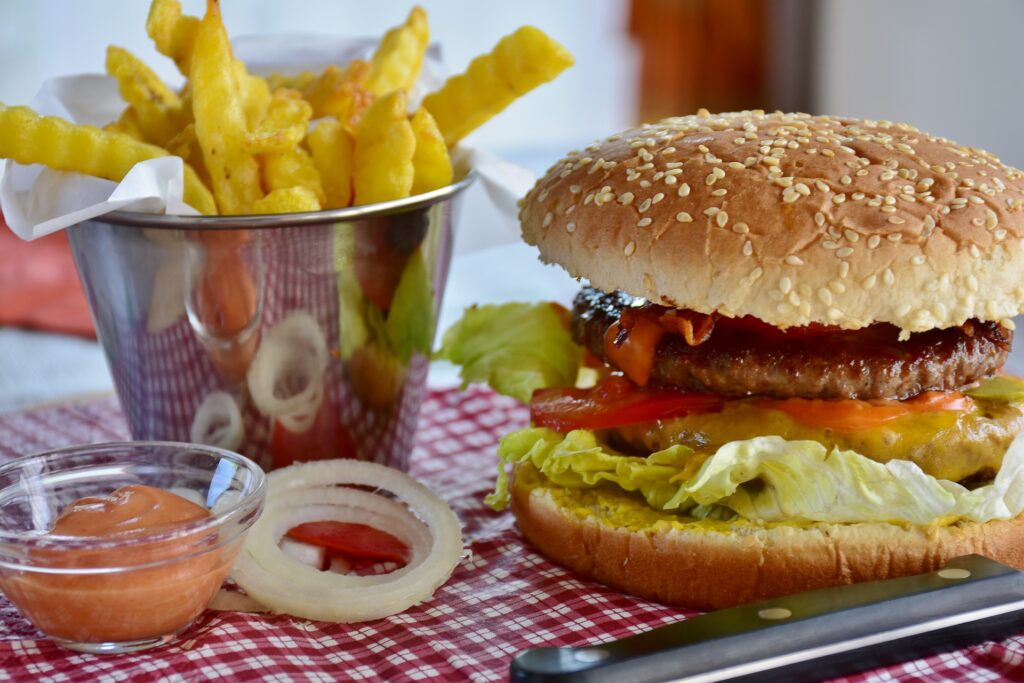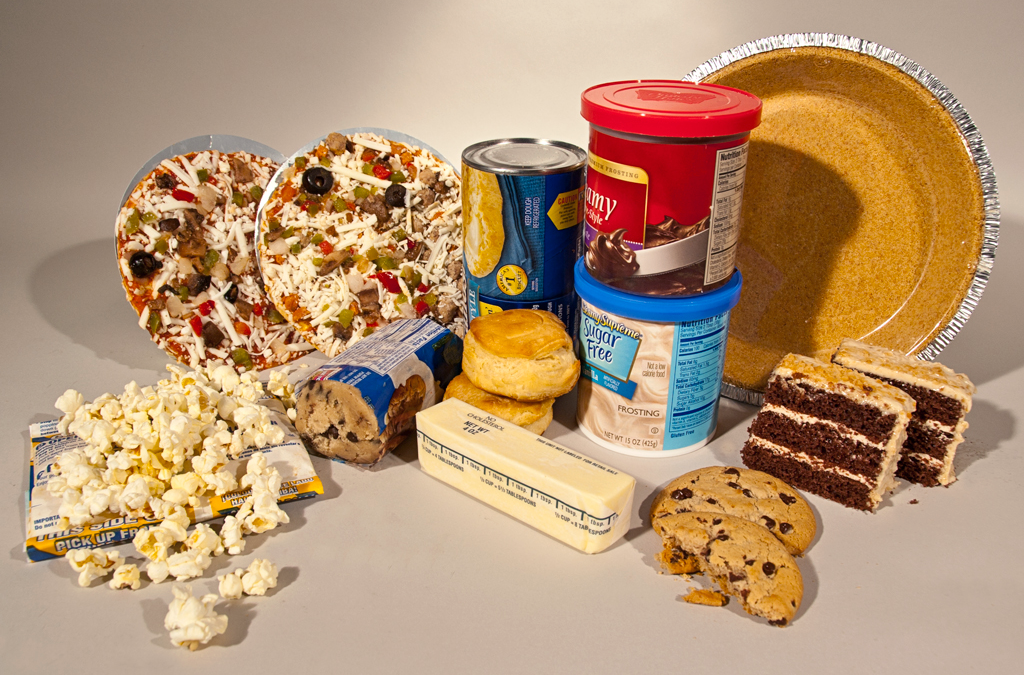These days, we use a lot of catch phrases to describe the food we eat—organic-this, and all-natural that. And we’re more educated then ever about the building blocks of food—carbs, proteins, and fats. Even with this knowledge, many of us continue to overdo fat … particularly one kind found in so many fast food meals—trans fat. In today’s educated society, why do we continue to rely on cheap, fast, unhealthy food? Especially with our knowledge about the pitfalls of hydrogenation, cholesterol and trans fats?
 To best answer this question, let’s look at the history of trans fats. In the early part of the 20th century, partially hydrogenated oil came into being—later described as trans fats. Trans fats give food a more pleasing texture (typically fluffy or flaky) and taste, and also act as preservatives. Would you hazard a guess as to the very first product that contained trans fats? If you’re from the southern United States, this might be a no-brainer—think flaky piecrusts and buttermilk biscuits. If you guessed Crisco Vegetable Shortening, you’re right. This white, waxy substance is still on grocery store shelves today! The next product to include trans fats was margarine, a butter substitute. Eventually, many foods contained this exciting new additive—things tasted better and lasted longer on the shelves! Cookies, crackers, potato chips, and even bread all listed partially hydrogenated oil as an ingredient.
To best answer this question, let’s look at the history of trans fats. In the early part of the 20th century, partially hydrogenated oil came into being—later described as trans fats. Trans fats give food a more pleasing texture (typically fluffy or flaky) and taste, and also act as preservatives. Would you hazard a guess as to the very first product that contained trans fats? If you’re from the southern United States, this might be a no-brainer—think flaky piecrusts and buttermilk biscuits. If you guessed Crisco Vegetable Shortening, you’re right. This white, waxy substance is still on grocery store shelves today! The next product to include trans fats was margarine, a butter substitute. Eventually, many foods contained this exciting new additive—things tasted better and lasted longer on the shelves! Cookies, crackers, potato chips, and even bread all listed partially hydrogenated oil as an ingredient.
In the 1980s, health advocacy groups went nuts over the ridiculously high saturated fat content in the typical fast food meal (often 60 – 100 grams of fat). In reaction to this criticism, the fast food industry switched to partially hydrogenated oil instead of tropical oils (like coconut and palm, used at the time). Of course, now we know that some saturated fats are “good fats”—think olive oil, nuts, coconut, avocados. Ironically, this means that many fast food meals were actually better for you BEFORE fast food chains made the switch to “partial” fats/trans fats.
You might be wondering—“Why are trans fats so bad for us anyway?” You’ve probably heard of good (HDL) vs. bad (LDL) cholesterol. If you got a cholesterol test today, you’d hope to find a high percentage of HDL cholesterol and a low percentage of LDL cholesterol. If the opposite were found—high LDLs—you’d be at risk for stroke, heart attack, and heart disease. The good cholesterol (HDL) acts like an antioxidant, helping the body get rid of the LDLs.
Naturally, the food you eat affects this ratio of good to bad cholesterol. If you eat the good fats mentioned earlier, you raise your HDLs and lower your LDLs.
However, if the food choices you make are high in bad fats like fatty meats, whole milk, or ice cream, your LDLs go up and your HDLs are unaffected.
Enter the trans fats. If you decide to sit down and eat a dozen chocolate chip cookies, the trans fats increase your LDLs AND lower your HDLs. Remember, saturated fats did raise the bad cholesterol levels, but had no affect on the good levels. With trans fats both HDLS and LDLs changed.
Scientists spoke up when they discovered the effects of trans fats on cholesterol. Strangely enough, at that time, food processors were not required to label the trans fat contents on their nutritional labels. Because of this, lawmakers and health advocacy groups took action. In 2002, the U.S. Food and Drug Administration, passed regulations that required companies to include trans fats content on nutrition labels. But of course, there was a loophole in this seemingly simple mandate. If companies made a food product that contained less than 0.5 grams of trans fats, they could label it “trans fat free.” In other words, you can buy food labeled trans-fat free and STILL negatively affect your HDLs and LDLs (and harden your arteries). What can you do?
First, pay attention to the ingredients! If you see partially hydrogenated anything, put it down! That’s trans fats. Also, put pressure on your local governing officials. New York city was the first to BAN trans fats in any food served in restaurants. California soon followed.
Finally, pay attention to the science of nutrition. Get educated. You can get healthier just by eating what’s good for you!

